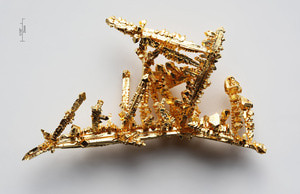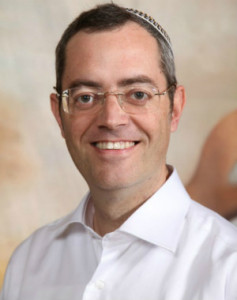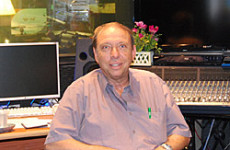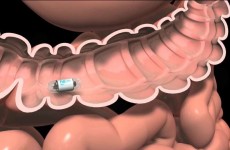A revolutionary diagnostic system under development in Israel uses a mouthwash embedded with gold nano-particles to detect cancer cells.

Imagine buying a kit at your local pharmacy to test for oral cancer. That may become a reality, thanks to Prof. Dror Fixler and his team at the Advanced Light Microscopy Laboratory at Israel’s Bar-Ilan University. They have invented a mouthwash embedded with gold nanoparticles — a non-invasive optical system that detects cancer of the head, neck, tongue or throat. This technology can diagnose cancers that currently must be confirmed by surgical biopsy. The solution was successfully tested in animal models, showing 97 percent specificity and 87.5% sensitivity.
Gold nanoparticles were already used for finding cancer cells…our job was figuring out how to use them in our optical setup for detection.
Now the gold gargle is in human trials supervised by two top physicians at Chaim Sheba Medical Center at Tel Hashomer: Prof. Michael Wolff, head of the department of otolaryngology, head and neck Surgery; and Prof. Avraham Hirshberg, a researcher in the department of oral pathology and oral medicine. In addition, the university’s technology transfer company is in early talks with potential commercial partners.
The three-year research behind this breakthrough constituted the doctoral thesis of Fixler’s student, Rinat Ankri. “Gold nanoparticles were already used for finding cancer cells,” she tells ISRAEL21c. “Our job was figuring out how to use them in our optical setup for detection.”

Fixler, a renowned electro-optics expert, had the notion of combining two existing technologies to make this idea work. Nobody ever thought about such a combination before, he says, perhaps because they are from totally different disciplines — one from pure physics and the other from bio-molecular imaging. “I am always thinking how I can use my knowledge and budget to do what smarter and richer people haven’t accomplished,” he jokes.
Shining a light on the matter
Some companies already have commercial products based on this principle, but they need a very high concentration of particles in order to see anything, says Fixler. If one technology was only theoretical and the other impractical, putting them together yielded an innovation that works.
This article has been republished with permission by www.ISRAEL21c.org. Click here to continue reading.




